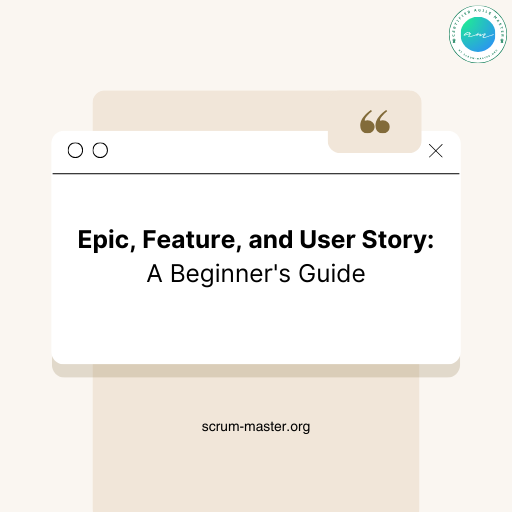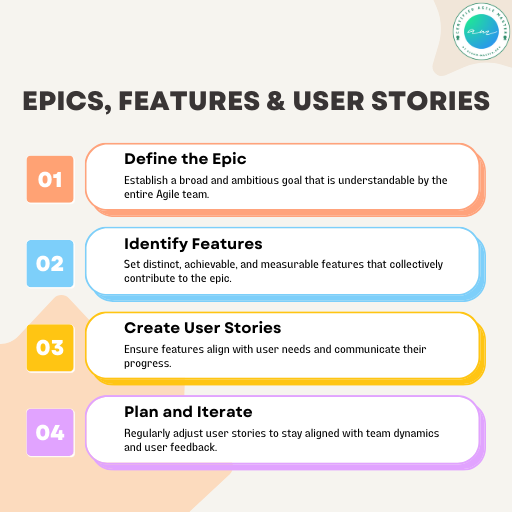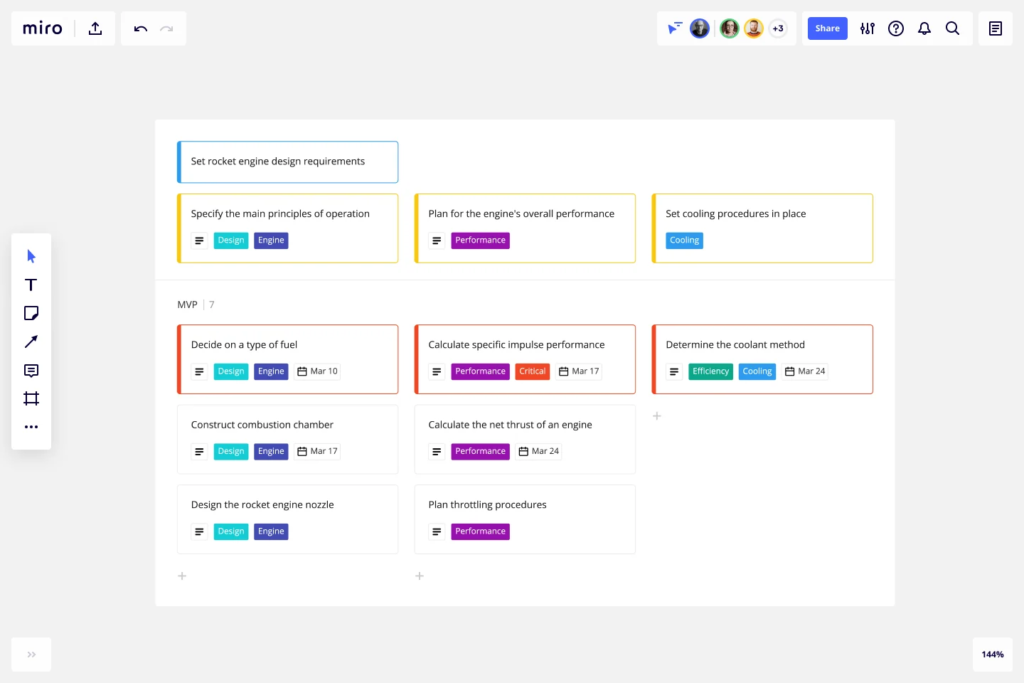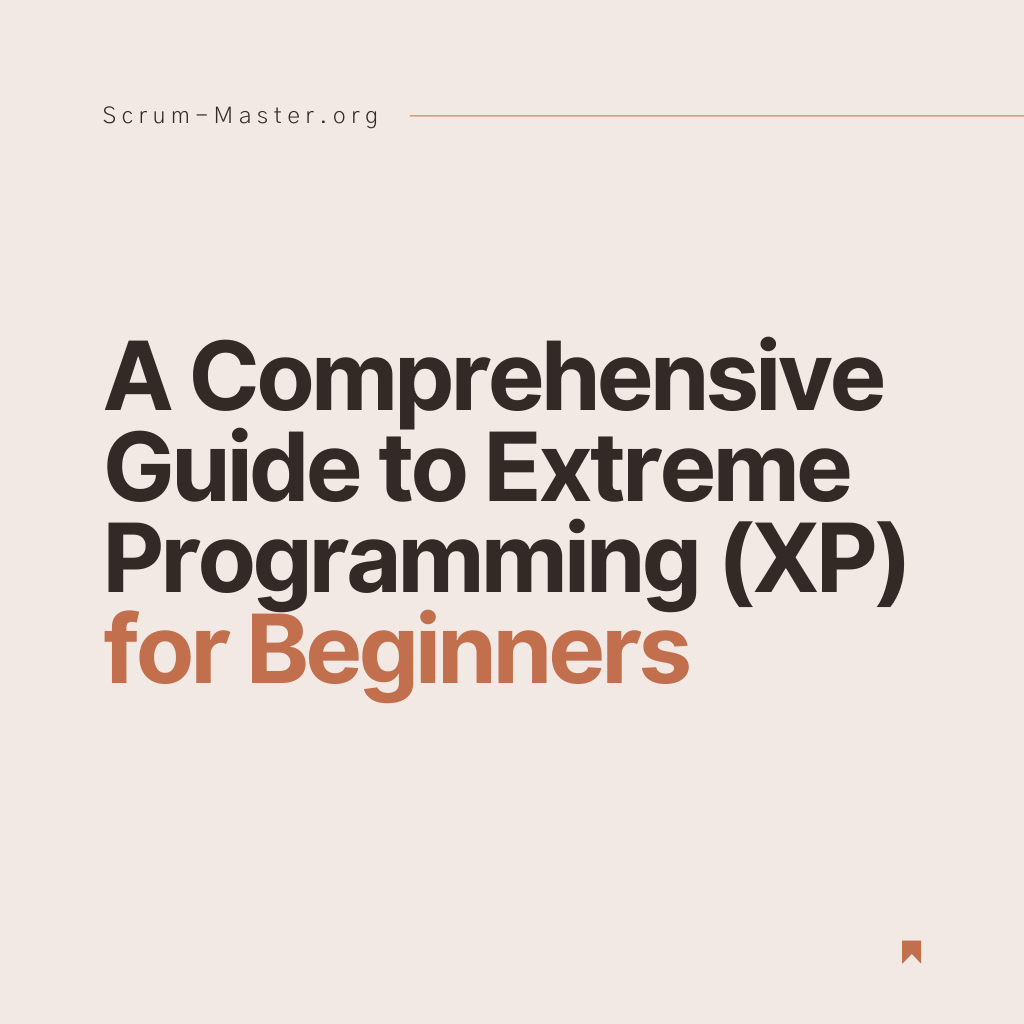In the journey of agile transformation, understanding the relationship between Epics, features and user stories is fundamental. These elements form the backbone of agile practices and play a crucial role in product management. Whether you’re navigating the SAFe framework or applying agile strategies to your project management, the precise breakdown of the product backlog into Epics, features and user stories is essential.
This process, guided by tips from experienced product owners and product managers, helps to clarify objectives, improve collaboration between teams, and maximize the value delivered. In this article, we’ll explore how these three levels of product planning interact to transform big ideas into concrete actions and tangible results, thus laying the foundations for successful agile product management.
Index
Epics: Strategic foundations of Agility
Epics are high-level structures that group together a set of functionalities linked to a strategic objective or a complex user requirement. An epic serves as a container for related work, defining an overall vision or big goal that the agile team wants to achieve.
As part of agility at scale, epics are crucial for aligning the efforts of multiple teams around common goals, facilitating large-scale coordination and planning. Their role in defining and prioritizing work in the product backlog is invaluable, enabling Product Owners and Product Managers to visualize the overall workflow and make informed strategic decisions.

The Feature: the link between vision and realization
Features represent concrete evolutions or significant additions to the product, serving as a bridge between the strategic ambitions encapsulated in the epics and the detailed actions described by the user stories. They are essential for translating user needs and expectations into tangible elements that enrich the product experience.
It’s common in agile project management to come across a variety of approaches to defining and using epics and features. On some projects, particularly those using tools such as Jira, the distinction between these two levels may sometimes seem less obvious, influenced by factors such as team preferences, project complexity, or the specific features of the management tool used.
Flexibility and clarity of definition
Agile methodology places great importance on adaptability and response to change, which is reflected in feature management. Although features are generally derived from epics and are broken down into user stories, teams can adapt this structure to better meet the requirements of their project:
- Directly under Epics: In cases where the distinction between epics and features doesn’t add clear value to the process, teams can choose to link user stories directly to epics.
- Maintaining Features: When it brings additional clarity, features act as intermediate categories, organizing user stories into coherent groups that facilitate planning and monitoring.
In Practice
Effective feature management is a key element of agile methodology, helping to break down major strategic objectives into achievable tasks. It involves dynamic interaction between the Product Owner, development teams and end users. Whether features are used to structure work within epics or handled more fluidly, the key is that they directly reflect user needs and contribute to the continuous delivery of value.
In the agile framework, the management of epics and features is not set in stone. Teams are encouraged to find the balance that works best for their project, always ensuring that each element of the backlog makes a significant contribution to the overall product vision. The aim remains to maintain a coherent workflow that facilitates the achievement of project objectives while efficiently meeting user needs.

Cutting process: From epic to Feature to User Story
The transformation of an epic into features and subsequently into user stories is fundamental to agile project management. This method breaks down objectives into specific tasks, facilitating planning, execution and follow-up.
Understanding Cutting
- epic: Major objective or user need, often cross-cutting several product functions.
- Feature: Specific product capability or enhancement, contributing to achieving part of the epic.
- User Story: Concise description of a functionality from the user’s point of view, contributing to a feature.
Cutting techniques
- Identify the epic’s Objective: Determine the objective or user need that the epic aims to satisfy.
- Breakdown into Features: Divide the epic into several features, each representing a necessary capability or enhancement.
- Subdivision into User Stories: Break down each feature into user stories, which describe specific tasks from the user’s point of view.
Story Mapping integration
Story mapping is a complementary technique in this breakdown process, enabling efficient visualization and organization of epics, features and user stories on a narrative map. This approach helps to:
- View epic range: Place the epic at the top of the map to define the global objective.
- Organize Features: Arrange features under the epic, aligned with key stages or functionalities of the user journey.
- User story details: Add several user stories under the corresponding features, sequencing tasks according to their order of execution or priority. If you want to know more about how to write a good User Story, you can read our complete guide here.
Using tools such as Jira or Miro
Jira is widely used to manage epics and user stories in agile projects. Nevertheless, for a complete visual representation including epics, features and user stories, Jira alone may prove limited, as it doesn’t directly distinguish the three levels in a story map view.
For those looking for a visualization that integrates these three levels of backlog elements, using Miro with the specific template I propose in our article on story mapping is a recommended alternative. Miro offers the flexibility needed to create a detailed story map, making it easier to distinguish between epics, features and user stories, and thus enabling more effective project planning and monitoring.
Conclusion: Epics and Features as Pillars of Agility
Epics and features are fundamental concepts in agile project management, especially in agile frameworks at scale. Understanding their role and knowing how to manage them effectively is crucial for any Product Owner, Scrum Master or development team member wishing to succeed in an agile environment. By mastering these concepts, teams can ensure smooth progress towards achieving project objectives, while responding agilely to user needs.








